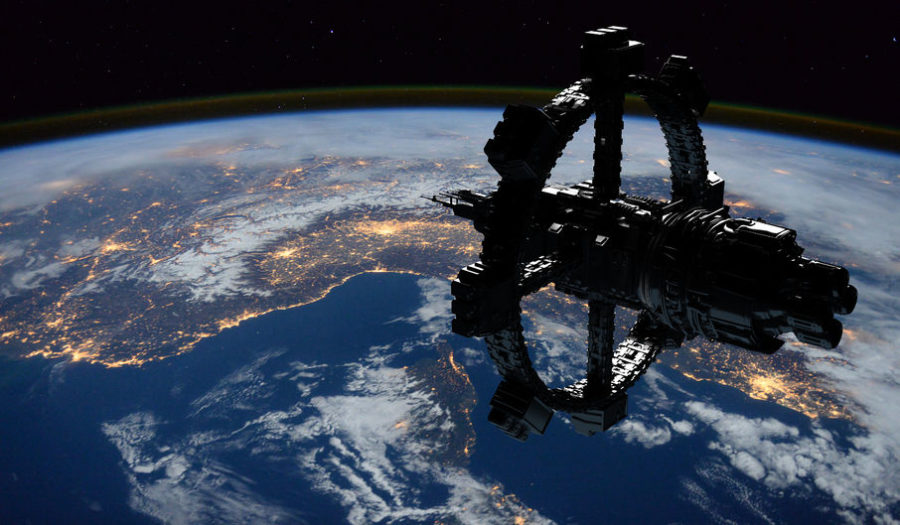Incomprehensible Ramblings About The Potential Future of NASA
October 4, 2018
Recently I wrote a story about NASA’s 60th anniversary, mainly about how the agency was formed and the amazing things it has accomplished in its lifespan. In this article, I will ramble on about where I can see NASA going in the next 60 years. Here goes.
10 Years From Now
Within the next 10 years, NASA can have a small outpost, or even a small colony, on the moon. Last month, Vice President Pence made a speech at NASA, describing future plans to promote a new era of space. He mentioned new priorities on the moon once again, saying there will likely be a space station gateway for the moon by the year 2024.
The James Webb Telescope will be launched in 2021, which will then be the world’s most powerful space telescope. It will be the successor to the world’s current most powerful space-based telescope, Hubble, which has been in use since 1990. The JWT will provide better details of our galaxy and others, better pictures of distant stars, and deeper looks into the history of our universe.
In 10 years, we can see the completion of the Space Launch System and Orion, NASA’s future rocket and crew capsule. The rocket will be NASA’s new launch vehicle, capable of performing NASA’s future colonization missions, and the new Orion capsule will hold such colonizers.
The SLS has faced some criticism, however, due to its being an inferior vehicle in comparison to SpaceX’s BFR. The SLS will only be able to hold crews of six in its early stages, it is not reusable, and it looks like a rocket that would have been used in the ‘70s. By contrast, the BFR will be able to hold crews up to a hundred, it is fully reusable, and it actually has an appealing design. I know looks aren’t the main thing, but style points are helpful.
30 Years From Now
But 30 years down the line, if the SLS is still in use, it will most likely reach its more advanced blocks, where it will have more payload capability, more thrust, and a slightly improved design. Not only that, but in 30 years we can definitely expect a decent sized colony on the Moon, if priorities aren’t shifted as they were in the Apollo era. (And we know how presidents are.)
As well as colonies on the moon, there will likely also be small colonies on Mars. These colonies wouldn’t be as large as moon colonies, but they will be another match to light colonization.
Aside from colonization, we could see asteroid mining as well. Asteroids are abundant in our solar system, and many are packed with minerals like iron and gold. Just as important would be water. Water is one of the main ingredients for rocket fuel, and an abundance of water is already helpful, but this could significantly lower the cost of rocket fuel, reducing the cost of space flight.
Space-based telescopes will have significantly more power, and scientists could possibly begin to see planets in other solar systems, which would have an immense impact on our society.
Space tourism will be a steady business — for rich people, of course. The current price of a ticket on Virgin Galactic’s trip to space is $250,000, a hefty price, I know. But as tourism would become more commonplace, the price could drop significantly, just like the cost of flying on a plane. Up until 1978, the average price for a round trip from L.A. to Boston was around $5,000, according to TravelandLeisure, whereas now it’s as low as $300. Within 30 years, space tourism could be as cheap as $10,000 to $20,000, but most likely anywhere between $30,000 to $50,000.
60 Years From Now
Sixty years from now, space tourism will be commonplace, as will colonization. There will be newer and more powerful rocket ships, more powerful than even our future ships (the BFR and SLS). These ships could be capable of carrying hundreds of tons of payload, and possibly could carry passengers in the hundreds.
The first actual colony ships will begin to be built, similar to the ones we see in movies with large artificial gravity habitats, with the ships themselves measuring thousands of meters long. These colony ships will most likely be making their way to the moons of Jupiter and maybe even Saturn.
It is likely that the International Space Station will have been decommissioned by then, but in its place will be dozens of other commercial space stations, many for tourism and others dedicated to science. In addition to these small space stations will be larger gateway stations that will serve as pit stops for ships heading to the moon and beyond.
And finally, Trash Economy, where we’ll be using cubes of garbage as currency (jk).
And After That?
There are countless theories as to what the future holds, with many more ideas, such as star farming and building O’Neil Cylinders in space. New ideas spring up every day. Why does it matter though, if many of us will likely not live long enough to experience them? Life-extending drugs and bioengineering being worked on at this moment could extend life to 120 years.
Now, I know extending the human lifespan sounds just a little crazy, but when we’re already talking about colonizing the moons of the outer planets in just 60 years, anything is possible, including going to space ourselves.


